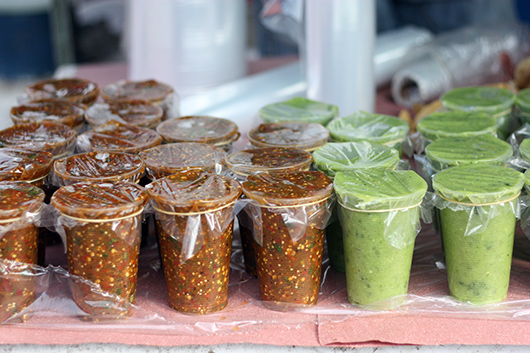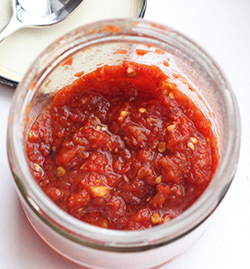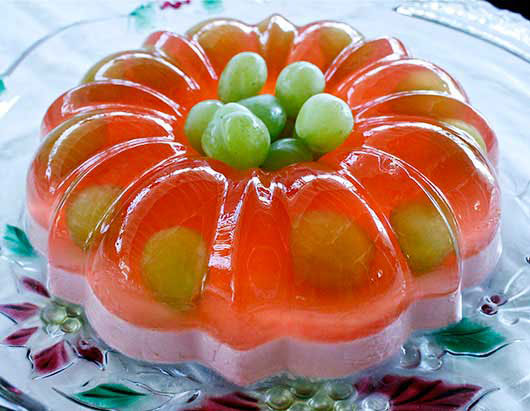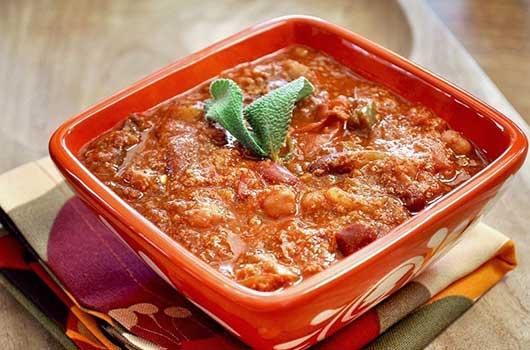
Dried chiles are easy enough to use in Mexican cooking—the difficult part is recognizing what makes each individual chile unique.
To that end, here’s part two of our Chile Primer. The first article covered the ancho, guajillo and pasilla. This round covers three more popular dried chiles, all of which should be available at your local Latino grocery store and online.
TASTE THE HEAT
Tasting is the best way to learn their flavors. Don’t be afraid to try a little piece of chile once you’ve hydrated it, before you blend it into a sauce. (If the chile’s very hot, you’ll want to know.)
Read Related: Chile Primer Series I
MULATO
The mulato, when fresh, is a type of dark-skinned poblano pepper. It’s a wide, dark-purple chile that smells most strongly of raisins and prunes. It’s easy to confuse this chile with the ancho, so when you’re buying them, making sure that the mulato chiles have a solid, dark color (no reddish tint) and if possible, smell them. The mulato should smell more pruney and chocolatey than the ancho, which often smells more like berries.
How to Use It • Chile mulatos are most often used in moles, and they’re part of what gives mole poblano that lovely dark-brown color. (Contrary to popular belief, the color doesn’t come entirely from the chocolate. It’s the chiles!) You can also use them in adobos.
Is it Hot? Yes, but medium-range.
 CHIPOTLE
CHIPOTLE
The chipotle is a dried jalapeño, and in Mexico there are all sorts of versions: meco (leathery brown), mora (berry-colored), morita (like mora, but smaller). Chef Alonso Hernandez of Mesón Sacristía restaurant in Puebla, Mexico, who’s researched the chipotle, says the mecos are actually boiled to make them less hot. Most of them are now smoked in commercial ovens, instead of over an open wood fire.
How to Use It • Chipotles have this great spicy-sweet flavor, which makes them great for salsas, pickling, stuffing, or even boiling with piloncillo. I also like to use them in pots of beans—one or two add a smoky, spicy kick.
Is it Hot? Yes.
CHILE DE ÁRBOL
The chile de árbol—also called chile de árbol when eaten fresh—is among the spiciest dried chiles in the Mexican chile spectrum. Sometimes they’re confused with imported Asian red chiles, but real Mexican chiles de árbol have more flavor, and they’re longer—usually about three inches long or slightly more. Mexican chiles de árbol also have a deep red color (not bleached-out red), and they should have an intact stem.
How to Use It • Salsas. It’s too hot generally for any sort of mole or meat sauce.
Is it Hot? God, yes.
MORE DRIED CHILE TIPS
On Storage • Chile vendors in Mexico recommend storing them in a paper bag, but they can dry out quickly. I store mine in glass airtight containers and they’ll keep up to six months. Chiles even older than that can still be used, although they may become brittle. Warm them on a comal to soften and seed them.
Protect Your Eyes • Remember that when handling a spicy chile’s seeds or veins, don’t touch your eyes, nose or mouth, or you’ll be in serious pain. Some people choose to wear Latex gloves—ÁI don’t and haven’t had a problem.












